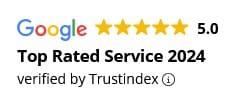Diane Cridennda
Sports medicine has added acupuncture to the roster of complimentary medicine to keep athletes performing. Acupuncture can help prevent injuries and speed up the recovery from sports-related injuries and enhances performance. John Elliot, an offensive lineman for the New York Jets, used acupuncture for years to relieve sore, strained muscles and to stay on top. Jaromir Jagr of the Pittsburgh Penguins suffered a debilitating groin injury, received three acupuncture treatments, and was able to return to the ice. Voodoo? Placebo Effect? Acupuncture has been used on racehorses, dogs and various animals for years. Animals certainly cannot credit a placebo effect for their pain relief. It is all about “Qi” (pronounced chee). As athletes, we are always pushing our bodies to the limits. Repetitive motion and pushing too hard result in muscle strains and eventually pain. When lactic acid builds up and we get soreness and muscle fatigue, other muscles are recruited to try to protect the compromised one. Soon, that muscle gets tired, and another one will come to its rescue until you have a painful injury. Swollen and bound muscles create imbalances and can actually pull the bones out of place. Pain is our fire alarm. In Traditional Chinese Medicine (TCM), we call that stagnation of Qi and blood. Anti-inflammatory drugs will stop pain receptors in the brain from your body sensing the pain, but they can also create more havoc by turning off the alarm, so to speak. TCM can treat the root cause and regulate the Qi and blood and balance the systems to enable the body to heal itself. If there is stagnation of Qi and blood, the injured area has no means to heal. In TCM, the human body is composed of Qi, moisture, and blood. There is interdependence among them with Yin and Yang being opposing forces. It is the theory that everything is relative and interdependent and cannot exit without the other. Just as humans are neither totally Male (Yang) or totally Female (Yin), we all have aspects of both. There cannot be night without day. Yin and Yang flow through the body along channels, meridians or pathways that are likened to rivers which irrigate and nourish the body. When Qi, moisture and blood are flowing smoothly, it will create good health. If there is a blockage anywhere, it impedes the flow and like a domino effect will create chaos, pain, and illness. For the athlete, acupuncture, can accelerate healing and manage pain from injuries or overuse. With trauma and even fractures, acupuncture can help bones and tendons heal more quickly, partly by increasing circulation, relaxing muscles and connective tissue, and reducing swelling around the site and regulating the lymphatic flow. The more quickly we can treat an injury or illness, the more quickly things will heal. Western Medicine, with its new technology, can now prove that by placing needles in the feet, which according to acupuncture improves vision, actually produces an activity in the same area of the brain that is stimulated when a light is flashed in the eye. TCM often provides effective treatment on its own, as well as being useful adjuncts to other forms of treatment. Massage therapy, chiropractic care, and good nutrition all play an important role in keeping us in balance. Prevention of injuries is the best approach. Acupuncture can’t put bones back into place, but it can help keep things in place by insuring that the muscle structures remain stable. Acupuncture therapy really doesn’t hurt, and the needles are about twice the thickness of a hair. When the needle grasps the “Qi,” it can produce a feeling of fullness or a pulling sensation which can be quite strong. I always try to work within my patient’s comfort zone. It is a sensation that we haven’t experienced before. Once I get the needles in place most of my patients fall asleep; they call it their “Needle Nap.” The needles vary in length, and I only use disposable needles. If you are interested in some reading regarding this topic, there is an informative, easy to read book by Angela Hicks titled “The Principles of Chinese Medicine.” ISBN 0-7225-3215-6.
Have a great season

